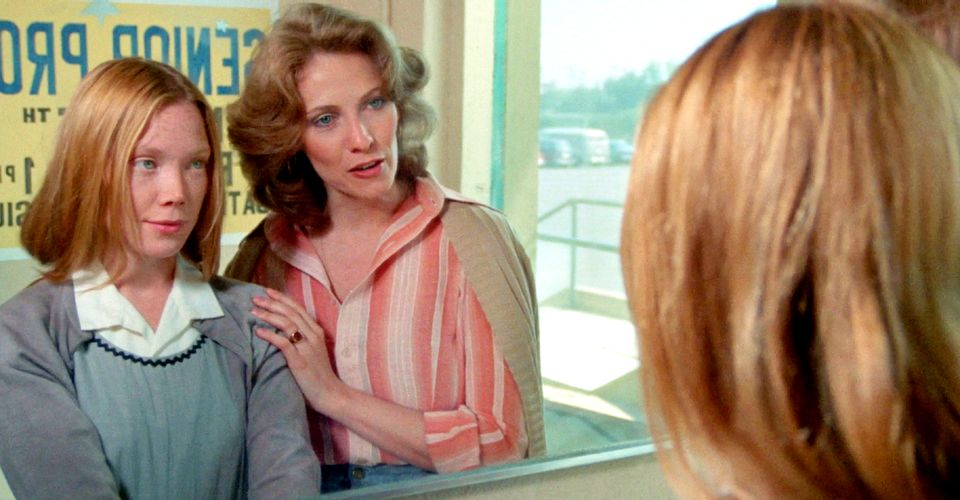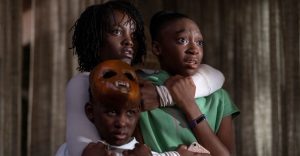Stephen King’s Carrie: How The Movie Created A Horror Sub-Genre

Stephen King’s first published novel, Carrie was adapted for the screen by Brian De Palma in 1976 and was met with critical acclaim, thrilling horror buffs and mainstream audiences alike. A harrowing tale of growing up and the chaotic changes that come with it, Carrie served as one of the first coming-0f-age horror films, launching a sub-genre around the perils of puberty.
The coming-of-age horror sub-genre focuses on the changes faced in puberty and the mental and physical disruptions that stem from it. Pairing body horror with the emotional pains of growing up, Stephen King’s Carrie was one of the first stories in the sub-genre and inspired generations to come. Movies such as John Fawcett’s Ginger Snaps, Karyn Kusama’s Jennifer’s Body, and Robert Eggers’s The Witch all rely on the narrative set forth by King’s first novel, following a path of horror and carnage that coincides with the protagonist’s sexual or spiritual awakening, brought forth by them entering adulthood.
Carrie’s journey, while tragic and violent, has typical coming-of-age elements such as embarrassment over her first period, the desire to break free from her controlling mother, and a burgeoning crush on a classmate. Blending these themes with the physical havoc Carrie brings on secures a vivid metaphor for the lack of control and confusion faced in teenage years. Many of King’s work has focused on coming-of-age; his young characters are often caught up in both real and other-worldly threats. From IT to Stand By Me, King continued to explore the trials faced in childhood and the resilience shown by those on the brink of adulthood. Carrie kickstarted King’s motif of tried and troubled youth, introducing a complex and catastrophic protagonist.
How Carrie Created A Horror Sub-Genre

The coming-0f-age sub-genre weaves growing pains and internal terror with a very literal type of horror. The horror genre in general relies on subconscious fears, dragging out society’s deepest dread and projecting it onto the big screen. There is an odd, undeniable comfort in seeing nightmares brought out into the open for all to confront. Fears are unifying, and even the most blatant horror dwells on an underlying relation to the panic of everyday life. The coming-of-age horror sub-genre hones in on a specific moment in time when bodies begin to feel foreign. Faced by everyone growing up, puberty is a universal experience, one that morphs the mind and body, leaving adolescents feeling confused and out of control—an ideal time for horror to infiltrate.
Stephen King’s Carrie, much like coming-of-age movies to follow, focuses on the type of disconnect from one’s own body that occurs during puberty. Both King’s Carrie and Brian De Palma’s adaptation kicks off with the shy, ostracized titular character experiencing a traumatizing first period. She is ruthlessly mocked in the girl’s locker room and receives no advice or support from her heavily religious mother, Margaret. As Carrie’s body develops, so does her power; her telekinetic abilities grow as she matures. Her stress and confusion pertaining to both the physical and mental changes she is facing sparks sympathy from audiences who may recall their own fear during their formative years. It is this sort of human connection that makes it difficult to villainize Carrie, despite the tragic havoc she wreaks on her classmates.
At the core, Carrie is still a child, scared and perpetually uncared for; her naivety, innocence, and anger hardens into a dangerous misuse of power. This trope is present in many coming-of-age horror movies: a young woman’s development coinciding with a harnessing of powers. While the occurrences vary in outcome, the heroine is usually faced with a decision as to how she will use her power, the forces of good versus evil weighing heavy on her shoulders. Part of the terror associated with coming-of-age horror films is the unknowable ability of the protagonist, as neither they nor the audience understand the full extent of their powers.
The emotionally instability and heightened tension of teenage years adds to the panic that things could go wrong at any moment, a sentiment that is shared by protagonist and viewer. Stephen King’s Carrie paved a path for the sub-genre, allowing a human experience to be examined and exaggerated through the unique lens of horror.
About The Author

















